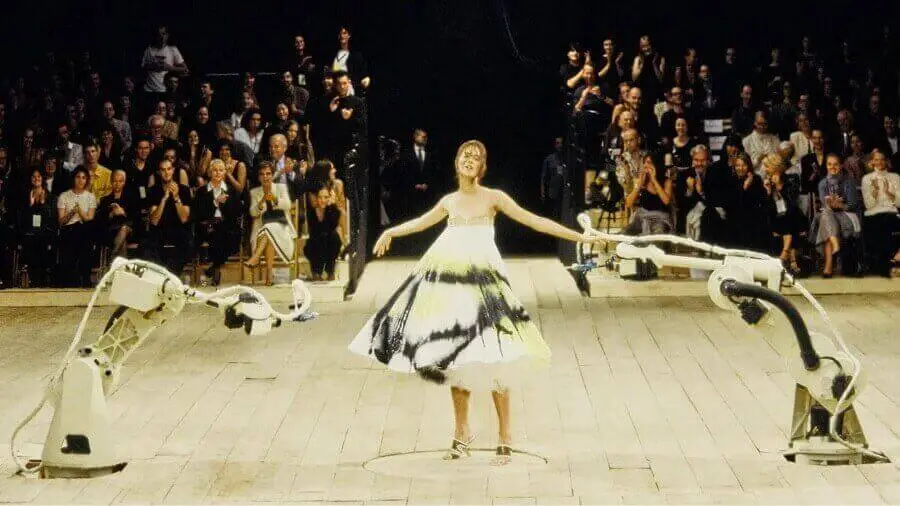In industrial settings, the design of robots is job-specific and task-oriented. It can be drawn from the knowledge we shared in our previous articles that robots are expensive industrial constructs that require not only hefty capital costs but also large sums of dollars needed for maintenance and smooth operations.
Therefore, the selection of a robot should not be premised solely on the specific features and characteristics, keeping in view the nature of the automated task, but on the economic considerations as well.
In 1988, almost 70% of Japan’s industrial robots were pick-and-place type controlled robots. Today, one can ascertain that the use of such robots is overkill. There are numerous areas in which robots are swiftly taking over traditional human labor.
Exceptionally, they are also being used in the fashion industry: In 1999, British fashion designer Alexander McQueen used two arm robots in painting his model Shalom Harlow on the ramp, thereby fusing fashion with the robotechnology.
Industrial Applications of Robots
In the section below, let’s discuss some key applications of robots in the industrial landscape.
Machine Loading and Unloading

Machine loading/unloading is a highly attractive application area in which industrial robots are extensively used. It is such a domain in which the design features of industrial robots are fully yet potentially utilized.
The robots for these applications must have higher accuracy, reliability, repeatability as well and synchronizability with the surrounding machine tools. Their merits over changing workpieces and work tools in the work cell are unchallengeable. A single robot can change by loading and unloading two or more CNC machine tools in a sufficiently planned production-based based workcell.
In the near future, therefore, robots will replace laborious human labor: they will load workpieces, set up machine tools, and change tools whenever needed as per manufacturing instructions.
In addition to the CNC machine centers, today, the robots are loading and unloading a wide variety of machines, such as sheet-work processes, rubber forming machines, magnetizers, testing equipment, mold presses, and the like. These robots are mainly of cylindrical or articulated-arm geometries with degrees of freedom ranging from four to six.
Spot Welding
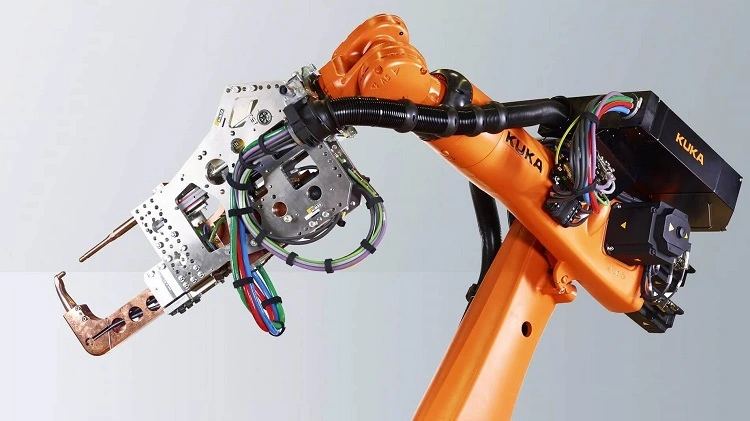
In the automobile industry, the use of robots for spot welding has attracted much industrial attention due to the high repeatability of robots for reaching out a precise location for a spot weld.
Furthermore, reachability and interchangeability are the additional benefits with which these robots are programmatically equipped. Mostly, articulated-arm robots are most suitable for spot welding.
Arc Welding
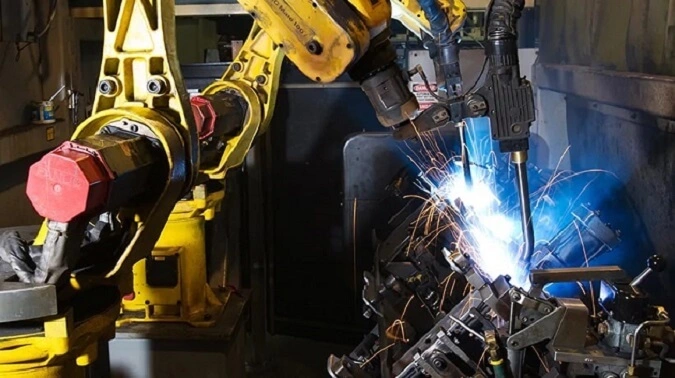
For a human operator, arc welding is a no-safe operation as it causes many hazards, such as toxic fumes, dust, burns, fire, radiation, and noise, among others. It also requires great welding prowess (skillfulness) on the part of the welder. Therefore, arc welding is getting robotized at a growing pace today.
The robots employed for arc welding are the continuous-path articulated-arm type with six degrees of freedom. They are equipped with servomotors and actuators to get rid of problems associated with oil leakages from the hydraulic elements.
Additionally, these robots are fitted with adaptive control as well as appropriate arc welding sensors for seam tracking. Such robots not only give a fair economy but also produce excellent weld quality.
Material Handling
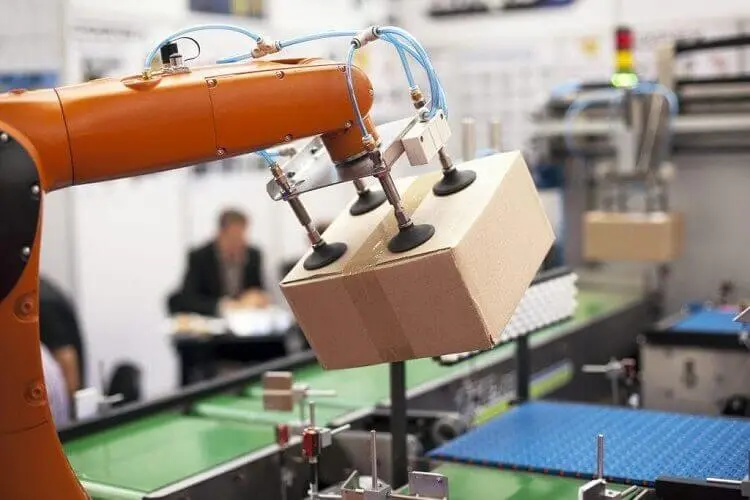
Material handling by robots includes operations such as packing and unpacking, piling and unpiling, palletizing and depalletizing, as well as transferring finished goods to and from the conveyors. For simpler operations, such as picking a molded part from an injection molding machine at the end of a production shot, a cartesian-coordinate robot with three degrees of freedom is used.
Typically, all robots are material handling robots: mainly, they are either simple polar-coordinate robots or articulated-arm robots with six degrees of freedom.
Material Processing

In material processing applications such as flame cutting of steel robots and other mechanical structures, holding and guiding high-pressure water-jet used in cutting ceramics and composites, arc-welding, and the like, the use of robots is becoming a business-as-usual thing.
For most of these applications, continuous-path robots equipped with servomotors and actuators are used. In addition to these, many lightweight machining tasks are also being robotized today such as deburring, drilling, tapping, grinding, and alike.
Machining operations such as those above are robotizable when the work part is too heavy to carry for frequent handling (shifting).
Investment Casting
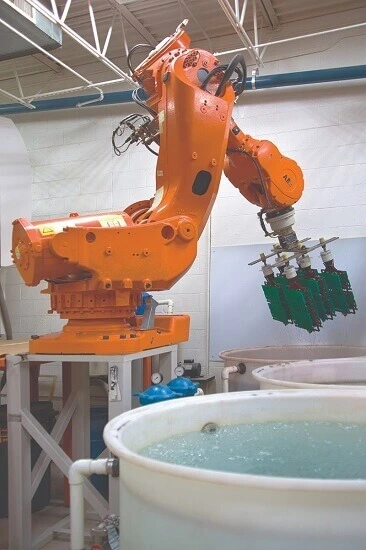
In applications related to investment casting (an old yet very effective metal forming technique), the robots perform surprisingly well in reducing the number of rejections of the casted molds. Such robots must have higher repeatability, consistency, and accuracy.
Painting

Painting is an industrial operation, which, in most cases, is a somewhat hostile operation. In sparingly running paint plants, the air quality index is not so good due to the presence of powder-paint particles in the air.
Moreover, the generation of toxic fumes also makes the paint-specific operations less eco-friendly. Keeping in view the factors such as these, robots were initially designed for their deployment in the paint plants.
Two important factors are key to understand in this regard: the velocity and the path adopted by the manipulator as both of these considerations affect the part quality.
In spray painting, which is a more critical operation, these factors become even more prominent: smoothness in the manipulator’s motion is a part and parcel aspect of the excellent quality of the painted surface.
Accuracy is not much of a critical factor. Continuous-path robots are the ideal robots suitable for painting operations.
Moreover, the ideal programming method used for spray-painting robots is the lead-through method in which the human operator guides/trains the paint gun to masterfully paint the surface to create a database for subsequent use.
Assembly
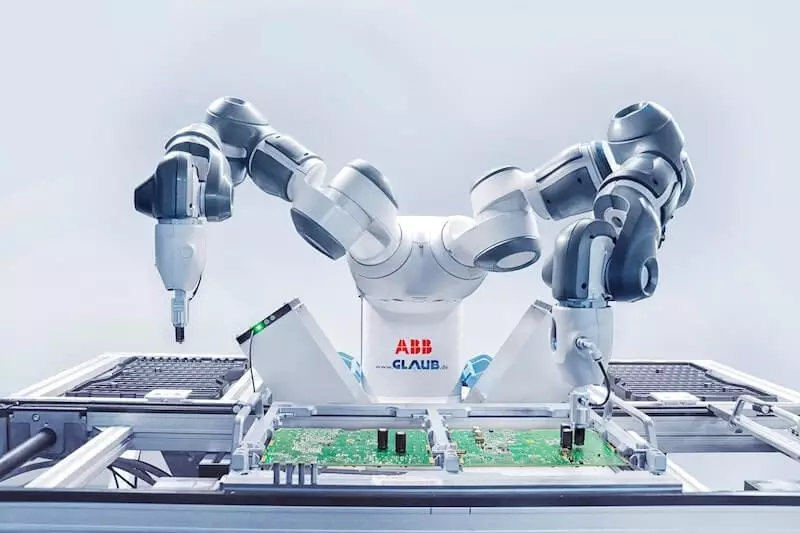
The assembly of industrial elements is the most common area today in which the robots are mainly deployed.
In part-assembly applications, point-to-point robots are the most appropriate type having as good repeatability as 0.002 inches (0.05mm).
Sensing devices are required to detect any hurdles on the way and feed the robot controller to take the best possible logical response.
In current practices, assembly robots are used to insert rivets, pins, washers rubbers, etc, as well as to tighten nuts and bolts, and place electrical elements in a circuit board, and so forth.
Frequently Asked Questions
What are the applications of an industrial robot?
The industrial applications of a robot are numerous. They range from loading/unloading of CNC machine tools to material handling/processing, part assembly to part packing/unpacking, painting, welding, and investment casting, among many others.
Which robots are used in arc welding?
For arc welding, the continuous-path articulated-arm type robot with six degrees of freedom is mostly used.
Which is the most suitable robot for picking and placing a part produced in an injection molding robot?
The simplest robot to be used for such an application is the cartesian-coordinate robot with three degrees of freedom.
Which programming method is most suitable for spray-painting using robots?
Lead-through programming method is the most suitable programming style used for guiding/training continuous-path spray-painting robots.
I am the author of Mechanical Mentor. Graduated in mechanical engineering from University of Engineering and Technology (UET), I currently hold a senior position in one of the largest manufacturers of home appliances in the country: Pak Elektron Limited (PEL).
